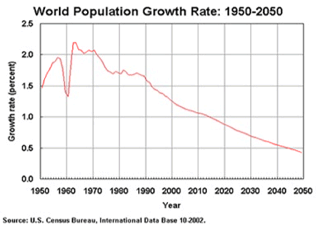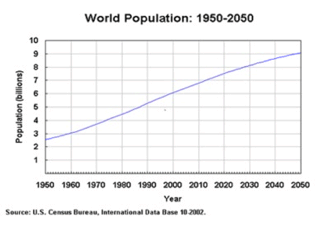

(SatyaBhavna
:: What we feel about a few truths!)
WORLD ISSUES
If the world is to save any part of its resources for the future, it must reduce not only consumption but the number of consumers.
(B.F. Skinner)
Population
Suggested Citation: Satya, B. and Satya J. (2003). World Population. Retreived from http://www.truefeeling.com/population.htm
World Population
Population goes hand in hand with economics of the world. Lower growth rates equate to higher productivity and progress in many developing countries; lower wage rates for large pools of unskilled workers! The cycle is straightforward yet complicated. All ills begin and end here...population trends will affect the prospects for a sustained attack on poverty. Population momentum and high levels of unwanted fertility threaten economic gains already made. Pervasive gender inequality could undermine the goal of universal access to reproductive health services. Slower growth in the rural labour force lowers demand for land (reducing the cost and slowing the unsustainable fragmentation of holdings).
According to UN, on Oct. 12, 1999, the world population reached the 6 billion mark (1987: 5 billion). UN Population Division's most recent projections for the 7 billion mark is 2011!
The following are the ranks of countries with their total population (millions):
1
2
3
4
5
6
7
8
9
10
11
12
13
14
15China - 1,281
India - 1,050
United States - 287
Indonesia - 217
Brazil - 174
Russia - 144
Pakistan - 144
Bangladesh - 134
Nigeria - 130
Japan - 127
Mexico - 102
Germany - 82
Philippines - 80
Vietnam - 80
Egypt - 71India - 1,628
China - 1,394
United States - 413
Pakistan - 332
Indonesia - 316
Nigeria - 304
Brazil - 247
Bangladesh - 205
Congo, Dem. Rep. of - 182
Ethiopia - 173
Mexico - 151
Philippines - 146
Vietnam - 117
Egypt - 115
Russia - 102World Population Graphs: Go figure! If you can't figure it out, go to the up-to-the-second World Population Clock and refresh the page a couple of times!

Organizations/Programs:
US Census Bureau (USCB)
United Nations Population Fund (UNPF)
Population Reference Bureau (PRB)
World Population Film and Video Festival (WPFVP)
World Overpopulation Association (WOA)
World Population Balance (WPB)
Dates:
World Population Day: July 11
International Day of Peace: September 5
Resources:
US Census Bureau. (2003). World Population Information.
Retreived from: http://www.census.gov/ipc/www/world.html
UNFPA. The Demographic Window.
Retreived from: http://www.unfpa.org/swp/2002/english/ch3/page2.htm
PRB. ( 2002).World Population Data Sheet.
Retreived from: http://www.prb.org//Content/ContentGroups/Datasheets/
wpds2002/2002_World_Population_Data_Sheet.htm
